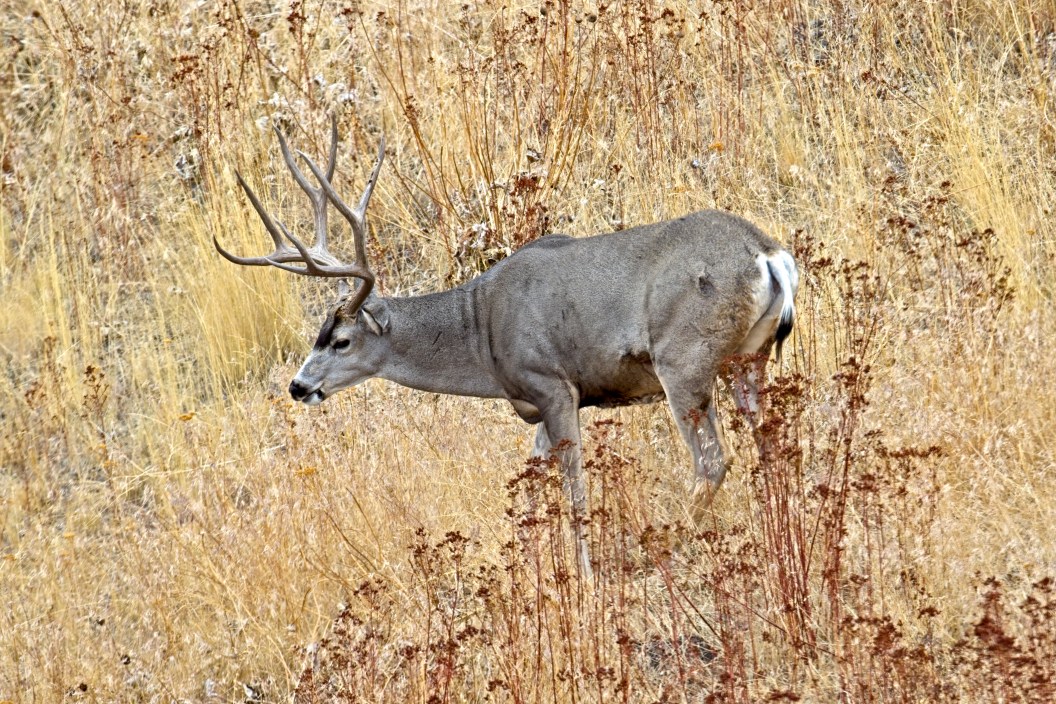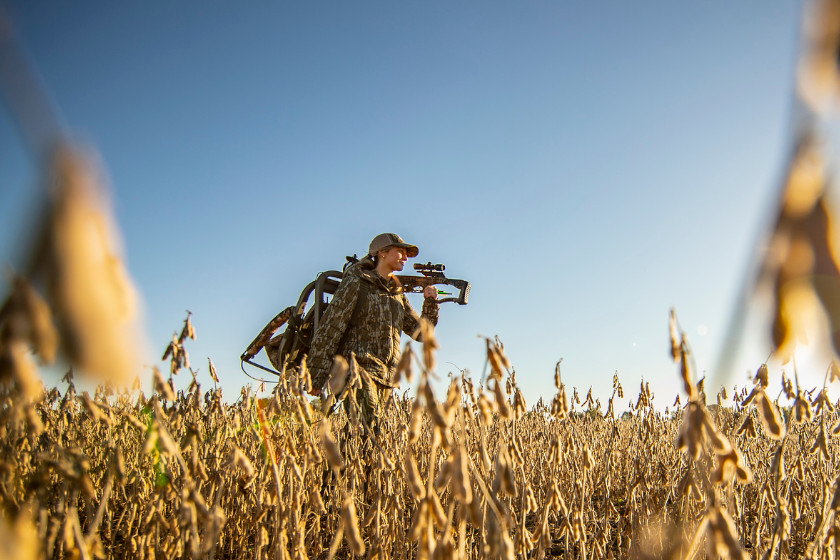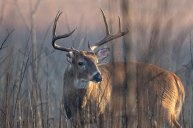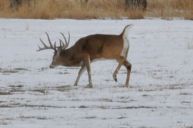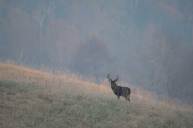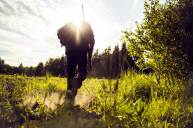Whitetail deer are can be fickle animals, making it hard to nail down their exact feeding times. Most every successful deer hunter consistently tracks their movements knowing where their bedding areas and food sources are located. In most instances, you don't want to invade a deer's bedding area, because that's their sanctuary where they feel safest. Applying hunting pressure can backfire, pushing the deer out of your and your neighbors zone.
Since these animals spend most of their time moving back and forth between these two centers of deer activity, hunters can also start documenting their feeding patterns, which is the ideal hunting area. Even during the rigors of the rut, these animals need to fill their bellies. And smart hunters base their sits around the optimal feeding times.
But what are the optimal deer feeding times? Many factors go into when deer decide it is time to chow down, making it a more difficult question to answer. Deer behavior can be wildly unpredictable at times, but we can make some best guesses based on what we know about their biology and their habitats.
When Are Deer Most Likely to Feed?
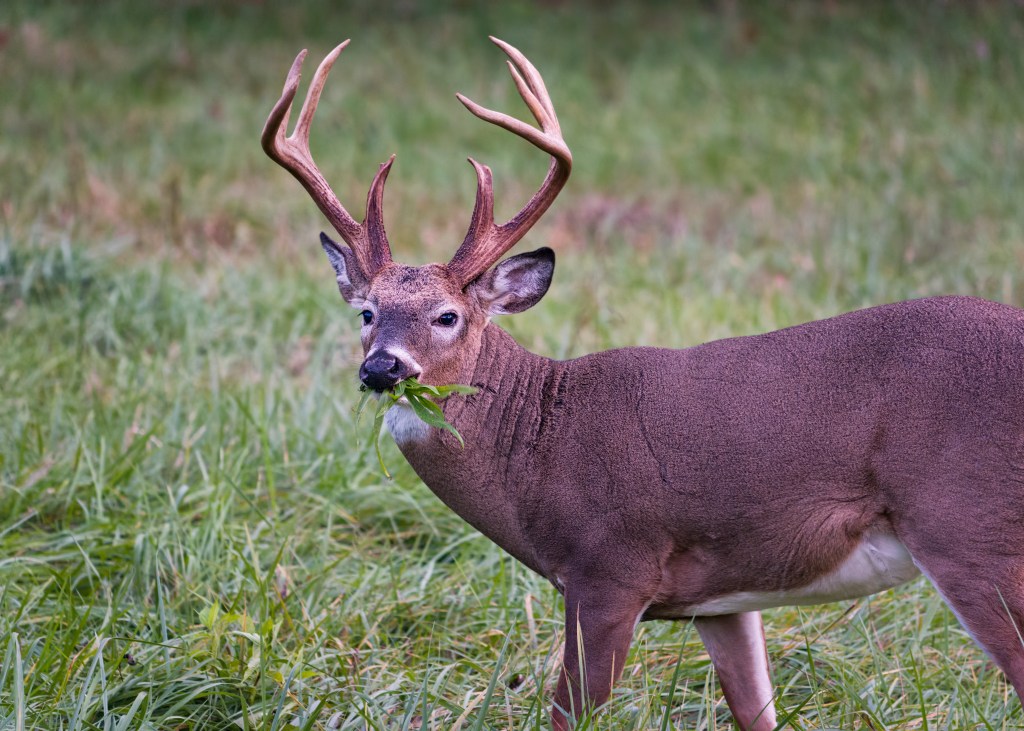
Getty Images, Dean_Fikar
Deer are crepuscular creatures, meaning they're more active at dawn and dusk. So, it's no surprise these are the best times to catch deer feeding. These times of day would probably be best described as the major feeding times, while everything else is likely a minor feeding time.
In my experience, the best deer feeding times seem to be in the twilight hours rather than the dawn. That's not to say you can't catch deer on a food source at midmorning. My dad's best buck ever—a wide, heavy, and old 10-pointer—made the fatal mistake of entering a food plot at that time on opening day of Michigan's firearms season in 1999. However, over 23 years of hunting, I've seen far more mature bucks in food plots in the evenings than I have in the mornings.
The National Deer Association has data to back up this kind of movement. It cites a North Carolina State University study that found dawn and dusk were the times of peak movement for mature bucks. However, its charts also show a significantly higher rate of activity between 4 p.m. and 10 p.m. than they do for 6 a.m. to 10 a.m. Some of that movement is likely rut-related activity, but there's no doubt morning and evening are the usual feeding times.
Personally, my favorite time to be on a food plot in November and December is between 2 p.m. and 6 p.m. I've shot some of my best bucks just a few minutes after 5 p.m., including the non-typical 9-point I harvested this season.
How Often Do Deer Feed?
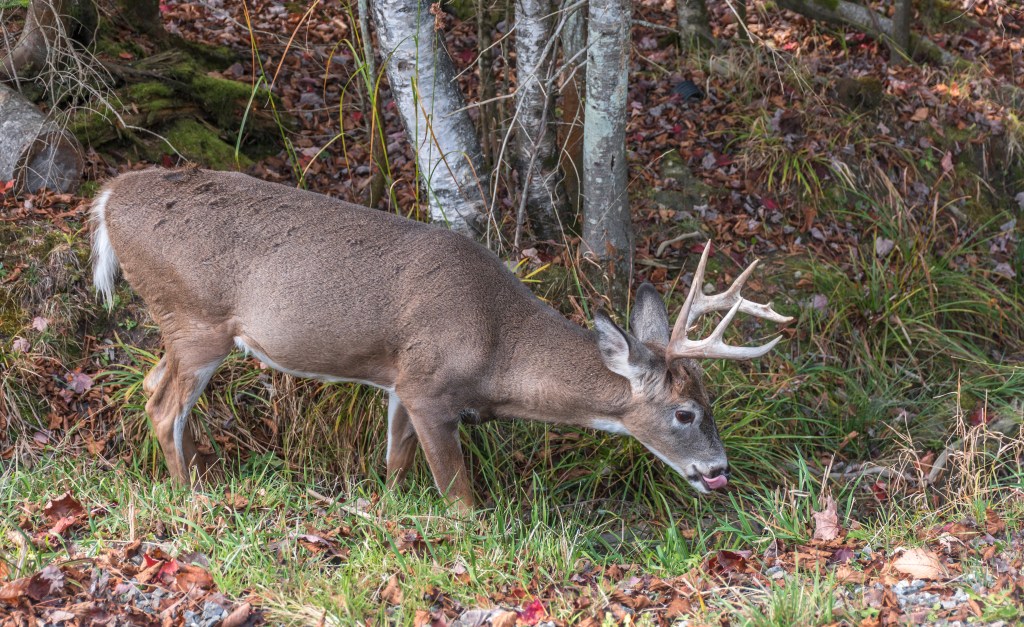
Getty Images, Karine Patry
It can be hard to pin down exactly how often deer feed. Anyone who has placed a camera on a food plot will note the wide range of times in both feeding and deer movement in these areas. Some hunters are totally convinced that deer will feed at least five times a day. However, in my experience from trail camera observations, it seems that many deer feed at least three times a day. According to the National Deer Association, whitetails need to eat 6 to 8 percent of their body weight daily just to stay healthy. They're going to eat every day, but it's probably not on schedule every day. It's probably more accurate to say that deer opportunistically feed whenever mood and opportunity arises.
As one example, on opening morning of firearms deer season this year, I saw several groups of does move through my stand area in the middle of some hardwoods about 100 yards from a food plot throughout the day. These deer had easy access to a food source nearby. However, I noted that they stopped to browse some small saplings and wild vines growing around my stand. These does were clearly moving between bedding and feeding, but they couldn't help themselves from grabbing a snack along the way.
I have also witnessed deer on their beds that nibble on branches and other plants next to their beds. Indeed, a study on buck movements by the Mississippi State University deer lab discovered mature bucks tend to spend most of their time in dense cover, preferably something that includes some sort of browse. The scientists found these areas through tracking radio collar movements; and when inspected in person, they found natural browse such as blackberry bushes and smaller trees. The bucks that hold to these areas can likely feed for much of the day without ever exposing themselves to too much danger. In truth, there are probably even more external factors in play here that dictate how much deer feed. And we're not just talking about the rut either.
External Factors Affecting Deer Feeding Times

Getty Images, EmilyNorton
If there is one thing that I have learned over the years hunting in a tough state like Michigan, it's that deer feeding behaviors can change at the drop of a hat. All it takes is a sudden spell of warm weather and the deer move very little. We had several extremely warm firearms seasons about five to six years ago where the deer simply weren't hitting the food sources as hard because conditions were sunny and 60 degrees in mid-November. Food was easy to find, and the deer could wander into feeding areas at their leisure. Contrast that with this season. Temperatures were in the teens and 20s the whole time. And we had snow on the ground for the first week and a half of the season. I saw more deer during firearms season this year than I ever have in the past.
Weather conditions play a huge role in deer feeding times. I love it when the snow is coming down between mid-afternoon and early evening. This is a time of major deer activity. Instinct spurs them on their feet, and they start looking for food earlier than they might normally. If you've got 5 to 8 inches of snow on the ground, hunt the food sources. Most of the time, they will throw a little more caution to the wind than normal. Food equals energy and warmth. The colder it is, the better a food source will be for deer hunting.
However, there can be some frustration there if the food source isn't the right one. I suspect the reason I had such a successful season this year was because the plot I was hunting had brassica in it. The deer were going to town on that stuff like I do a pizza.
Indeed, the NDA again notes that quality is everything to the deer. It cites mast (acorns, nuts, apples, etc.) as being some of the best things you can hunt over. These foods are loaded with sugars, fats, and carbohydrates that help give deer energy and fatten them up for the long winter ahead. Plus, they just love the sweet taste of apples and other fruits. A good acorn crop will probably outperform a plot planted with simple clover every single time.
And then there's hunting pressure. Again, I think this was a major factor in my success this season. The neighbors on all sides of the property I hunt blasted away like crazy the first few days of the season, leaving only one food plot that probably truly felt safe. I've spent some time deer hunting on state land here in Michigan in recent years, too. The Michigan DNR has gone all out in the state game areas near me, usually leaving standing corn in place well into December. It's also planted some soybeans and other crops in the fields of the state land near me. However, I've never had any success catching a deer in those plots in the daylight. There's simply too many hunters putting too much pressure on these areas, essentially forcing the deer to be nocturnal.
Can Solunar Tables Predict Deer Feeding Times?
I first heard hunters talking about moon phases and deer feeding times back in the late '90s. Very early in my hunting career, I purchased one of those circular solunar tables, where you check the date and it tells you the best deer hunting times for that day. I know plenty of hunters swear by these charts. I also know plenty who have harvested some great deer they attribute to those kinds of charts and tables. That said, I've never had any luck using deer feeding charts. I tend to look more at the external factors I mentioned earlier when deciding to hunt deer over food sources.
These days, the cardboard charts are gone and have been mostly replaced by mobile apps. What has always been curious to me is how different hunters have different strategies for hunting by moon phases. For years, I heard it was either a waxing or waning quarter moon that was best. Then I heard it was a full moon. To be honest, I don't know what to believe anymore.
I'm a guy who likes to look more to science for answers to this kind of thing. Buckmasters notes that a graduate student from North Carolina State University conducted a deer movement study using GPS and compared it to solunar activity. His study found that the moon phase didn't seem to factor into those movements.
After a little digging, I found a study of deer activity and solunar events conducted by researchers from Auburn, Louisiana State University, and the South Carolina Department of Natural Resources. The study looked at 38 bucks fitted with GPS collars, and the researchers compared their recorded movements to moon activity. The results were somewhat inconclusive. I won't detail the whole study; it's online here for anyone wanting to read it. But it is quite interesting if you have the time.
"Our data suggests events identified by solunar charts have some association with deer activity. However, the relationships between lunar events and lunar phase expressed in solunar charts may be misleading," the study's abstract said.
Make of that what you will. But I personally started having more success when I started hunting based on weather conditions than what hunt predictors were saying are the ideal times. Understand that I'm not trashing the use of popular charts and hunt prediction apps—I'm only saying they haven't worked for me personally. For now, I think I'll just stick with what does.
